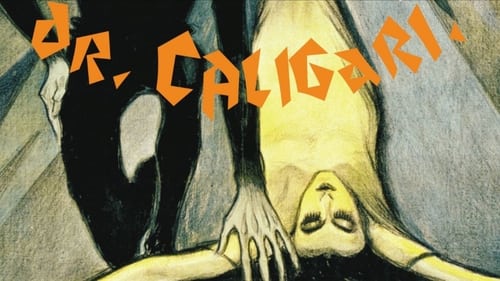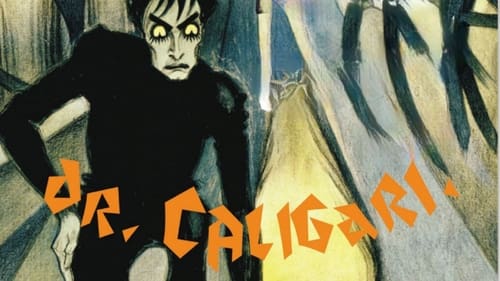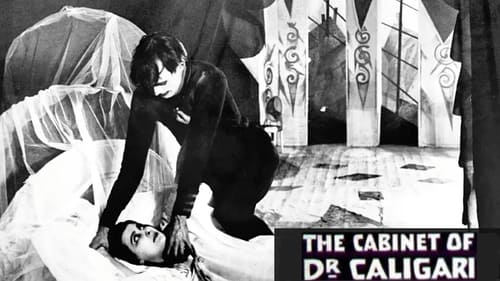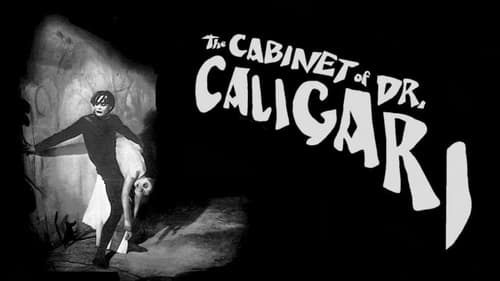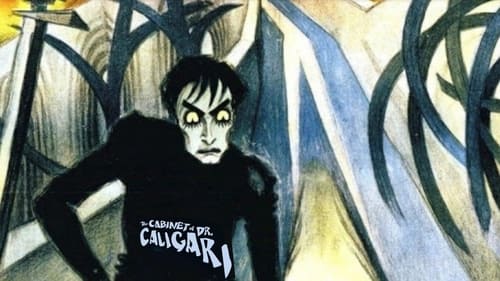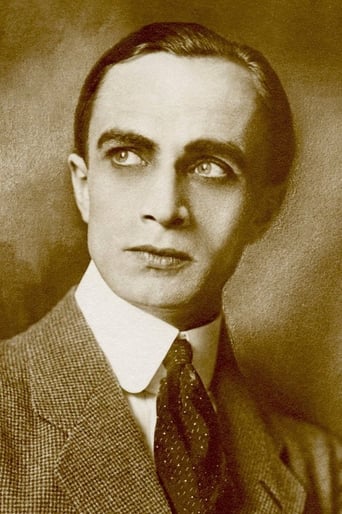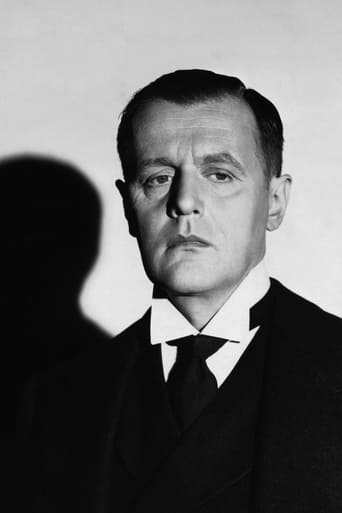PodBill
Just what I expected
FeistyUpper
If you don't like this, we can't be friends.
SoftInloveRox
Horrible, fascist and poorly acted
Gurlyndrobb
While it doesn't offer any answers, it both thrills and makes you think.
cricketbat
Since this is considered one of the first horror films ever made, it's no surprise that I enjoyed it. The Cabinet of Dr. Caligari seems to have set the standard for how a horror film should look and feel. The plot was compelling and the acting was entertaining. Now I'm going to be a film geek for a moment: One of the best examples of German Expressionism I have seen.
dougdoepke
Surreal nightmare. Being a silent movie, visuals count for all, and here they add up to a world of eerie imagination. I gather the production had meager funds, so the sets amount to a triumph of artistry over budget. Note how effectively the angular contours intensify the ghastly mood. Oh sure, the acting—if you want to call it that—is resoundingly florid, to say the least. Of course, exaggeration was unavoidable since narrative could not depend on dialogue, nor endless rounds of caption interruptions. As a result story is sometimes hard to follow, and probably subtleties in the story were lost on viewers like me. But, oh boy, for folks stuck on eye shadow, there's enough here to keep a mascara factory going full blast. The eyes definitely have it. Note, however, that the amount and kind of eye shadow pretty much defines the character. So it's not just for show. Anyhow, the 67-minutes counts for more than a milestone in movie-making. It's still an unreal visual experience.
apilon47
Probably the best silent film I have ever seen, Caligari has a clear emphasis on German Expressionism while also being a methodically psychological horror film about the supernatural and the surreal imagination of the insane. Silent films started off as filmed plays, and in that vein this film constructed all its sets by hand, painting them in odd patterns, and showing interesting angles and vacant shots of this small village. Besides the interesting set design for the walls and floors, the stairs and windows were strange as well. The slanting light (possibly natural) barely illuminated the creeping corners and morose faces of the townspeople. The town itself is romanticized in the loose culture of the times, being small and simple, without the benefits of electricity or modern technology. Much of this was candlelit which lent to an atmosphere where monsters and creepy crawlies could be behind the next wall just waiting to murder you. Not such a stretch since a string of murders mysteriously starts after the appearance of the gypsy centric fair and a tent advertising a coma creep controlled by a large eye browsed crone named Dr. Caligari. The somnambulist, or coma patient, is a vampiric man who lays within a box and predicts the future based on some unnamed psychic abilities. The look of it and the intricate storyline lends to a very creepy vibe. The characters all express their emotions in a wide and over dramatic way, as this is a German Expressionist film. Everything is bigger, darker, more hurried and vague, and you never quite know who the villain is. Beside that you are always theorizing whether there is any true magic, or it's medicine, or frankly a dream of an insane person. Nothing is ever clear or true, and that leads to feeling unsettled and uneasy over what is on the screen. True, it's silent, and true the characters are at times bland, but it's the storytelling and the fact that it's a horror film that keeps the suspense and the intensity alive. It's a horror film that will have staying power through the decades to come.
Leofwine_draca
The first feature-length horror movie ever made (not counting the hundreds of shorts made in the previous two decades, usually under five minutes each), this is classic stuff and rightly so. With an age-barrier of nigh on a century you might think that this movie, seen today, is very dated, and you'd be right. The lack of dialogue (although there's a fine music score), the theatrical acting and static direction may make this movie an effort to watch but the effort is well worth it. My main problem with these older films is that sometimes they can be very boring with little action, but that's not a problem here; the pacing is fast and the film is short which makes the time fly by.The plot, involving Caligari and his murderous somnambulist, may seem deceptively simplistic at first glance, but there are lots of little tricks thrown in to fool the viewer. Also, other characters whose lives act as other plot strands, flowing in and out of the central thrust of the story. All this and a twist ending to boot.The acting is generally top-notch, if you allow for the acting style of the period. Werner Krauss makes the most of his bookish Caligari, complete with horn-rimmed glasses and odd-looking attire; his outlandish and very atypical character makes him highly watchable. Stealing the show, though, is a very young Conrad Veidt (later to go on and pursue a successful Hollywood career) playing the somnambulist, around whom most of the action is centred. Veidt's striking appearance (black clothing, white eyes, black sunken eyes) fits together well with his understated acting approach so that he appears very deathly and almost like a living corpse; just looking at him gives you the creeps. The supporting characters are humane and normal and thus forgettable, but fine.What is most striking about this movie are the sets, most of which were constructed form paper or cardboard. The abstract drawings, and the oddly surreal, angular walls create a visually stimulating fantasy world for the sinister events to take place in. Much has been made of the "painted shadows" employed to give the movie more of a balance between black and white and the effort pays off. Karl Freund's photography certainly brings out the atmosphere of the sets and they're unforgettable. Like Tolkien did with Lord of the Rings, all involved with the making of this film transpired to create a believable fantasy world which is similar to, yet very different, from our own; an alternate reality perhaps. Whatever the motivation, the expressionist art displaying itself here made the movie a classic.Seen today, the horror is subtle and all of the murders offscreen (aside from one memorable shadow-play). A far cry from the movies of today and, indeed, the wealth of absurdly violent (heads, bodies being chopped apart) shorts made in the early 1900s. Yet the image of Veidt stalking his victims through long corridors have undoubtedly influenced all that has come after it, from Lugosi's Dracula to Michael Myers in HALLOWEEN. Altogether, THE CABINET OF DR. CALIGARI is a horror classic which should be seen at least once by any fan with a passing interest in the genre, or indeed in the cinema, as this is a highly influential and important film in every respect.






